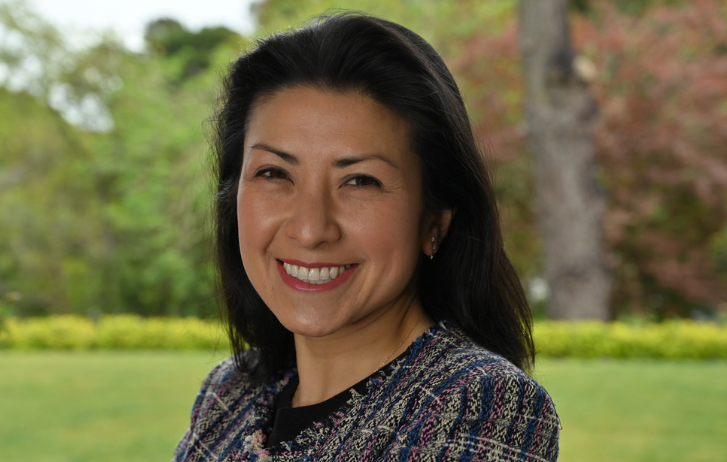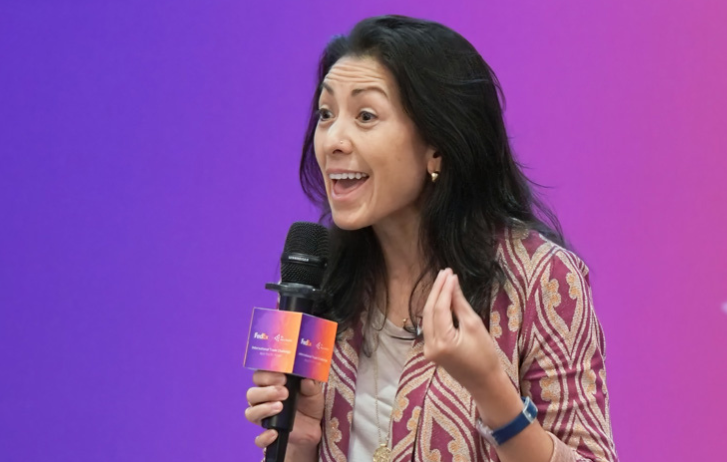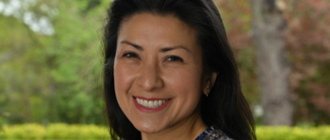
Plinkit’s CEO Is On A Mission To Make Parenting Simpler
By FedEx | October 3, 2024
Charmaine Pattinson is the CEO of Plinkit, a leading online child development resource for intentional parents and educators.
- Plinkit is an online childhood development resource for parents and caregivers of young children.
- Featured in Forbes and New York Magazine, Plinkit provides a roadmap for navigating the most common hurdles and milestones of raising children.
- Plinkit CEO and founder Charmaine Pattinson reflects on her entrepreneurship journey and passion for helping parents and teachers understand how children learn.
Being a parent is hard work. It doesn’t come with a manual, and with the onslaught of information on the internet, it’s hard to know what is essential. Enter Plinkit, an online child development resource filled with actionable fundamentals and high-impact masterclasses for parents and educators. Founder of Plinkit and parent education expert Charmaine Pattinson has a simple goal: To make it easier for parents to discover what they need to learn and do.
As a Harvard Business School graduate, Charmaine is also passionate about teaching entrepreneurship and critical thinking skills to students. She recently participated in the 2024 Asia Pacific FedEx/Junior Achievement International Trade Challenge as a grand judge, where she drew on her expertise as a CEO to mentor students and aspiring youth entrepreneurs in business strategy and marketing.
We spoke with Charmaine to learn how her journey through parenthood and entrepreneurship has inspired her to support families and classrooms across the globe.
Tell us why you started Plinkit. What made you take the leap to become an entrepreneur?
Charmaine Pattinson: I’ve been lucky to do many fascinating things in my career. I’ve analyzed multi-billion-dollar acquisitions, managed big teams and P&Ls, and partnered with government leaders. But, until I had children of my own, I realized I had no idea how to parent. I wanted a clever and actionable roadmap for raising children. I couldn’t find what I was looking for, so I built Plinkit.
As adults, we often see the world as a series of problems and walls. Kids see no limits and have no inhibitions. That’s very inspiring to me. It’s what motivated me to become an entrepreneur.
As an entrepreneur and parent, you’re constantly juggling multiple priorities. How do you do it?
I live and breathe the same strategies and scripts that I share in my masterclasses.
1. Set clear expectations upfront. Whether this is with colleagues, your partner or your kids, being consistent and clear with expectations sets the bar for how to be. It’s also a mitigation strategy for potential conflicts that might surface. When you set expectations and agreements upfront and problems arise later, you can point back to the expectations you agreed upon as a neutral resolution.
2. Keep important things visual. I am a champion of lists, Post-It notes, and any sort of visual cue as a physical prompt. My brain moves a mile a minute, so I need to put structural elements in place to free up my brain to get on with the doing. Once something important enters my brain, I immediately do something with it, even if it’s just writing it out on a Post-It note or putting a hold on my calendar.
3. Build a system of habits. I have many little habits to help keep my brain organized, so that it runs on autopilot for small things and has more space for higher-level thinking. The automaticity of these habits frees up my mental load and allows me to focus on what is necessary.
We also have consistent routines at home. With three young children, this is key for keeping our home life in order and reducing mental clutter.
What have you learned from your children that has shaped Plinkit or your leadership style?
I have this mantra on my desk: “While we try to teach our children about life, our children teach us what life is all about.” It’s very true. Parenthood is a great testing ground for leadership.
Be patient. Listen. Deal with the unexpected. Be resourceful. Set clear and consistent expectations. Set limits and boundaries. Plan. Prioritize. Remember a gazillion details. Make decisions. Make mistakes. Get back up. Stay focused. Stay calm. All of these are foundational child development skills. They’re also essential leadership skills.
My leadership style became much more human once I had children. I lead with more empathy now. I also love mistakes. And that’s a mindset shift that came directly out of raising children.
“Try, fail, iterate, try again in a new way” is a life skill we teach children, but it applies just as readily to leadership. The ability to see mistakes as stepping stones can be a real superpower.
As a Harvard Business School MBA graduate, how has your education helped you be a good business leader?
Harvard Business School taught me two very profound things:
1. Think bigger. I remember thinking after meeting my classmates and professors, “Wow! You can be that?” So many people had done so many awesome things – things that I didn’t even know were possible. When you’re surrounded by that, it makes you want to be better, think differently, learn more. Harvard Business School pushed the boundaries of bolder ideas and higher ambition for me. I came out with a clearer sense of the impact I wanted to make.
2. Confidence wins. I remember feeling really intimidated on my first day when the entire class gathered for an introduction. Then, I had a team project meeting and realized I was as capable as everyone else. That experience changed my belief in what I could contribute. I learned an important lesson that day that I carry with me: You can look confident even when you feel differently. You can also be good at something and not feel confident about it. I now lead knowing that we all have something to contribute, and that my job as a leader is to help bring out that very best in each of us.
What is one thing you didn’t learn from school in being a leader?
Being an intentional parent and having a hard-charging career at the same time is impossible. Someone told me early in my career, “You cannot have it all at once. But you can have it all - just at different times.” I believe that’s true. If you get a call from your child’s school, somebody needs to pick up your child. I knew early on that I wanted to be that somebody. And I’m not apologetic about that. But there are trade-offs I make to be that somebody. Nobody tells you at graduate school that your priorities, values, and leadership style may shift when you have kids. It did for me, and it brought out the best in me.
The invisible load is real. What is often overlooked and undervalued is the invisible load of parenting. The emotional, mental and day-to-day tasks of raising a family and running a household are exhausting. Nobody ever tells you that at school. In fact, you come out of school and go into the workforce aspiring for things to be egalitarian. But caregiving often falls to women. A Pew study showed that even if couples earned similar amounts, they still fell into traditional gender roles, with women taking on the majority of child caring and housework.
My call to action for every leader and manager is to actively see that invisible load and to consider it in how you manage.
Leadership is like parenting. It’s not a destination. It’s a practice. It takes work. It should take work! It’s about how we meet the challenges, how we participate in ways that matter, and how we make decisions through a series of small choices that open another set of possibilities.
How do you keep improving yourself as a leader?
Surround myself with people that ask hard questions. Despite being in a content-heavy world where people want quick answers, my interest is in the question asked. I’m interested in being around people who critically think, “What’s another angle to this?” “Where’s my blind spot?” I want to be in the same room with those who are brave enough to ask those hard questions. That feedback is a gift. If you’re not open to critically hearing the hard questions, you might not be solving the right problem.
Play with my kids. Children teach me to see the world in new ways. One of the best things I did recently was climb a set of monkey bars with my seven-year-old. Can you remember the last time you swung from monkey bars at a playground in front of people? This little act reminded me that I can learn new things, I’m more capable than I think (yes, I did it without touching the ground!), and risk and opportunity are everywhere - we just need to see it.
***
Our Confessions of a CEO column quizzes Asia Pacific leaders on business insights that aspiring entrepreneurs can learn from. To discover more entrepreneurship stories like Charmaine’s, subscribe to our monthly newsletter below, and stay tuned for the next edition.
SHARE THIS STORY
- How To Ship A Giant Panda
- How To Make Freight Shipments Work For Your Small Business
- The Rise Of Intra-Asia Trade: Opportunities In The China-Southeast Asia Corridor
- Southeast Asia's Role In Global Manufacturing Supply Chains
- 8 Most Unusual Shipments In The History Of FedEx
- Where Do Old Planes Go When They Retire?
Sign up now and save on your shipping rates!
Sign up now and earn discounts by shipping instantly with FedEx Ship ManagerTM at fedex.com.
Recommended For You
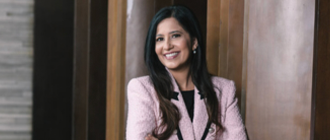
Scaling For Success: How This CEO Built An Empire With Content
Roshni Mahtani Cheung talks about her unique business model, the challenges she faced expanding the company, and her advice for aspiring CEOs.
Read More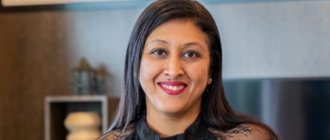
How Terrascope's CEO Is Reshaping The Path To Net-Zero
Emissions measurement & management platform Terrascope shares climate insights with companies aiming to reach net zero for a more sustainable future.
Read More
The APAC CEO Transforming How Businesses Harness Data
Karen Kim’s cloud data platform, Human Managed, equips enterprises with the data intelligence they need to operate more efficiently.
Read More